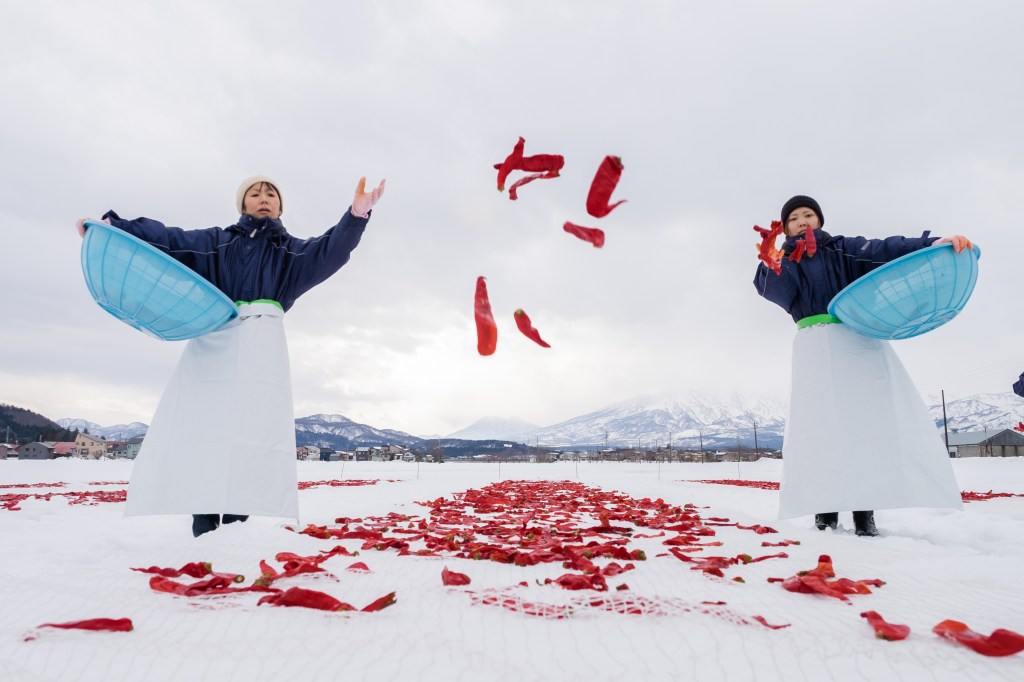In Japan, Niigata prefecture is known as snow country. This strip of coastline along the Sea of Japan (East Sea) gets such a colossal amount of snow that before the invention of the plow and snowblower, the people of Niigata built the entrances to their homes on the second floor and used the snow as a ramp to enter and exit. The snow has also affected the way in which the people of Niigata eat.
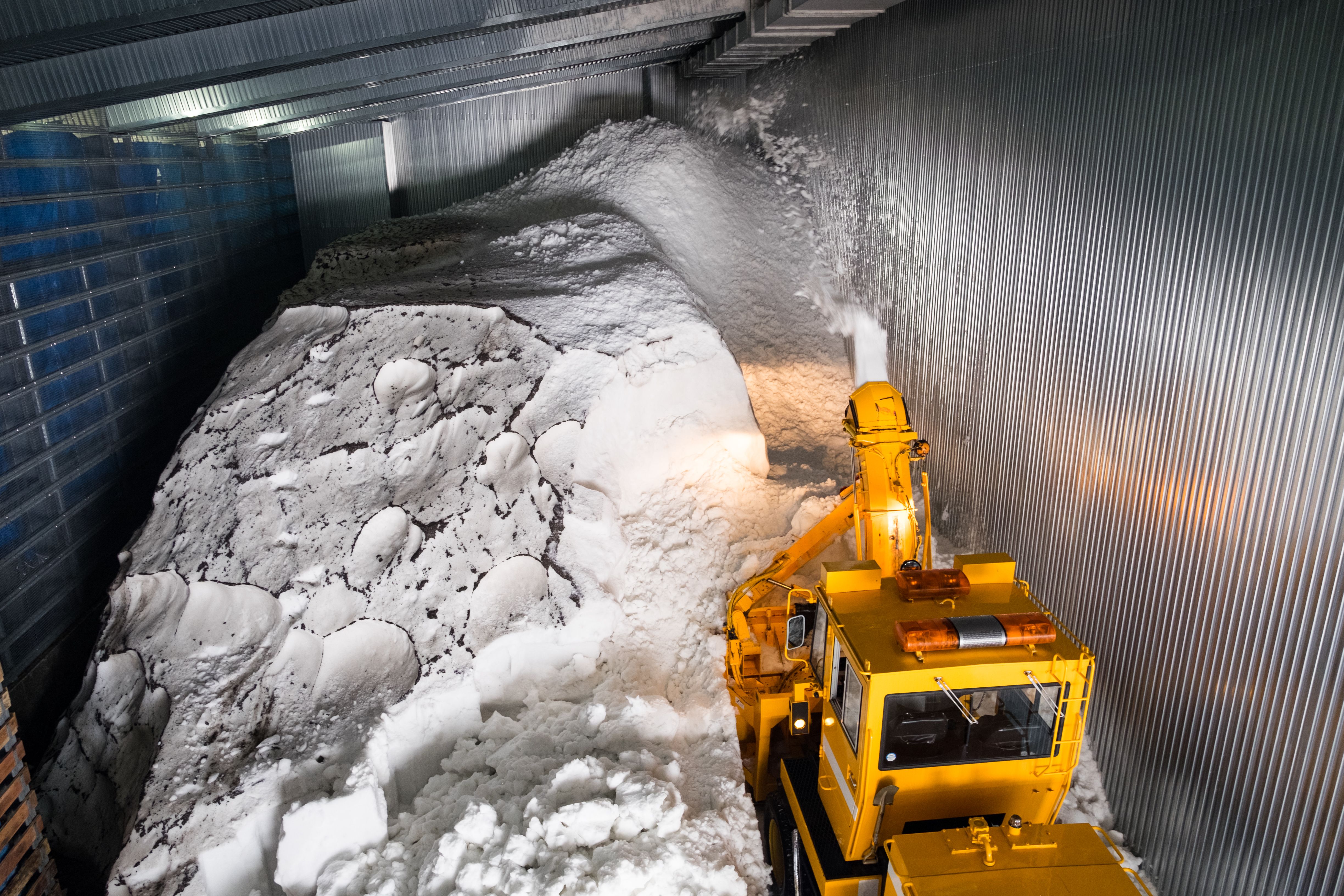
A plow pushes snow into a modern yukimuro storage facility at a sake brewery in Nagaoka, Niigata. All photos by author.
The prefecture’s inaccessibility meant no quick trips to the market, no resupply from surrounding provinces if stores ran low, and no way to keep themselves fed through the long winter other than to prepare, preserve, and persevere. That meant burying vegetables and other foodstuffs in snow mounds called yukimuro (snow houses) and cultivating preservation methods using koji (rice mold) to give the dishes of the region a unique profile, even by Japanese standards.
Videos by VICE

Snow vegetables are pulled from a yukimuro mound. The lettuce, cabbage, carrots and daikon radishes are sweetened by the process and stored without using energy making them as ecological as they are delicious.
The technique was born of necessity, but it turns out that the natural refrigeration and steady humidity raises levels of amino acids, making carrots, apples, daikon, and other root vegetables sweeter, and their aroma less earthy. Now producing more than they need, farmers market these yukinoshita (under-the-snow) fruits and vegetables across Japan, providing extra income during an otherwise lean season. Restaurants and customers from across the country preorder this coveted produce to be sure they get some of the the limited supply.
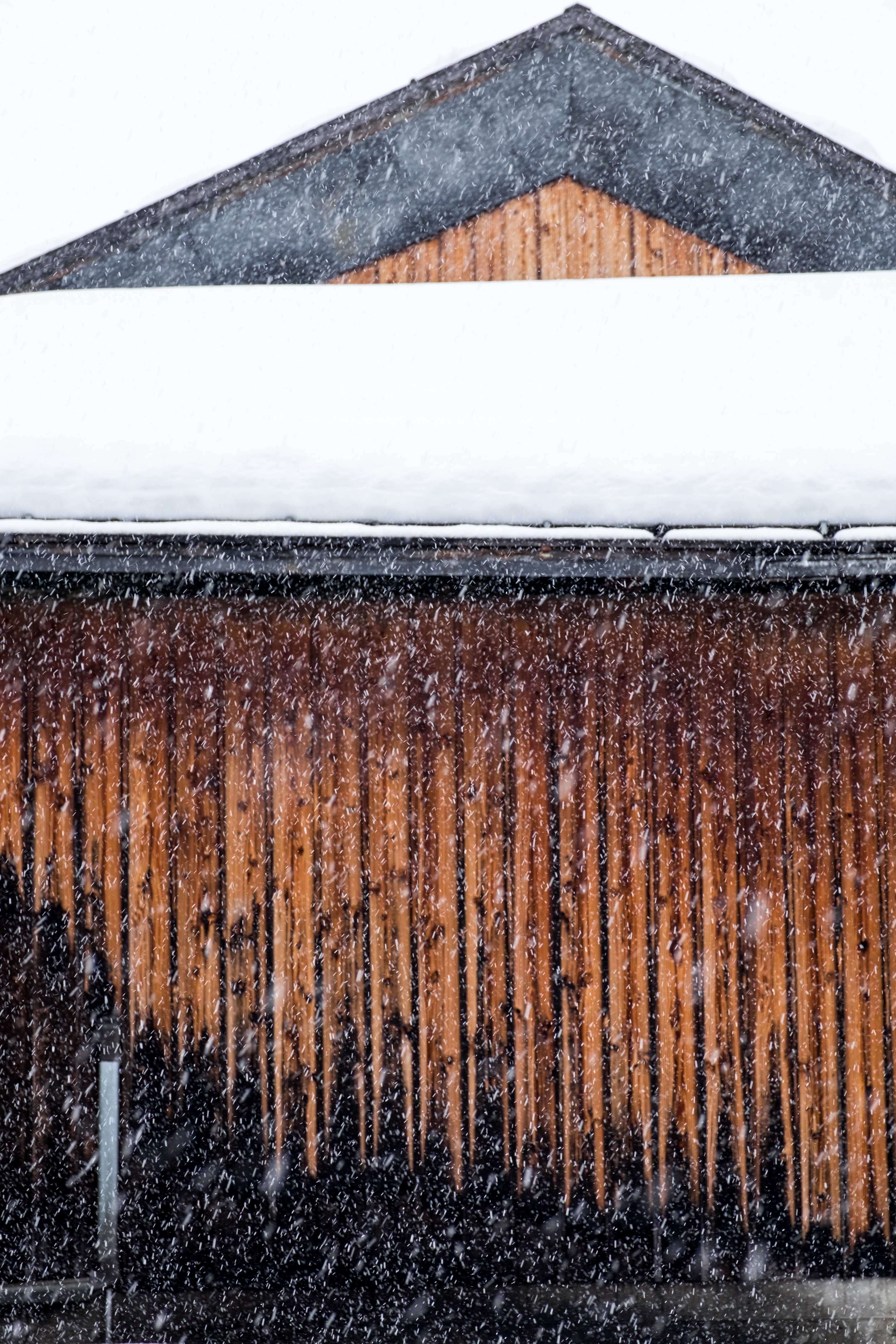
Snow vegetables are pulled from a yukimuro mound. The lettuce, cabbage, carrots and daikon radishes are sweetened by the process and stored without using energy making them as ecological as they are delicious.
Perhaps the most famous—and labor intensive—of these snow foods is kanzuri, a pepper paste mixed with yuzu kosho (citrus pepper), made by family-owned company of the same name. Kunaki Tojo is the third-generation owner of Kanzuri. The Tojo family was the first to produce the condiment—which until that point had been made only in small batches for household use—for the open market.
READ MORE: Meet the 70-Year-Old Japanese Women Who Freedive for Seafood

Sho Suzuki shows off a snow carrot which was grown under the snow and stored in the yuki muro. It’s sweeter and has an aroma that kids are said to prefer to regular carrots.
Kanzuri has only four ingredients: togarashi chili pepper, salt, rice koji—a yeast–like mold used in sake production—and the peels of yuzu (Japanese citrus). The chilies are first pickled in sea salt, then ‘bleached’ in the snow for three to four days to remove the salt, bitterness, and some of the heat from the peppers. The seeds that fall from these peppers become next year’s pepper plants.
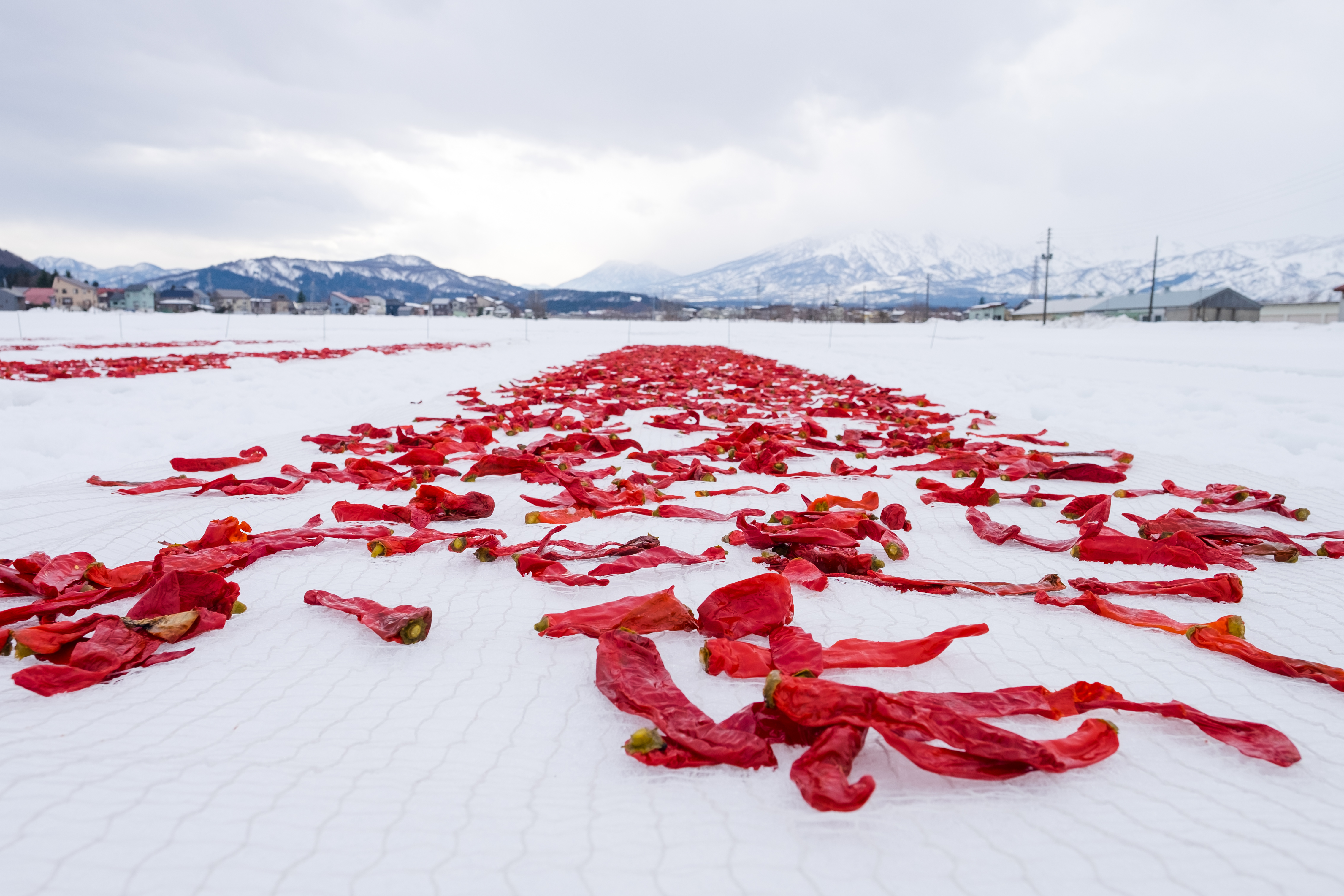
Togarashi chili peppers are scattered on freshly fallen snow to be ‘bleached’ before the fermentation process begins.
“My Grandfather traveled to Mexico to study pepper cultivation and when he returned he decided it was possible to produce kanzuri here in Myoko on a larger scale,” said Tojo. “Really, it’s just a scaled up version of the original process used by families to make small batches. It’s three years minimum of fermentation. There’s no rushing it. Maybe it’s a Japanese mindset, but I believe we have to be patient to enjoy good things.”

Kuniaki Tojo, third-generation owner of Kanzuri, the original kanzuri producer in Japan.
The peppers are collected, then blended with rice koji and yuzu and put in barrels, where the temperature is allowed to rise and fall with the seasons. The extreme weather in Niigata—blistering hot summers and long, cold winters—means the barrels must be checked and rotated to ensure a uniform taste and fermentation. Three (or as many as six) years later the result is a citrusy, delicately spicy paste that combines real umami with a subtle heat.

A young worker scatters Togarashi chili peppers near the Kanzuri factory in Myoko-shi, Niigata prefecture.
“Traditionally we add kanzuri to soups like ramen or miso-shiru, or we use it as a condiment for yakitori,” explained Tojo. “Some people prefer it to wasabi on sashimi. I think it goes with Western foods, as well. It’s perfect as a steak sauce—any dish that needs a nice aroma and little bit of heat.”
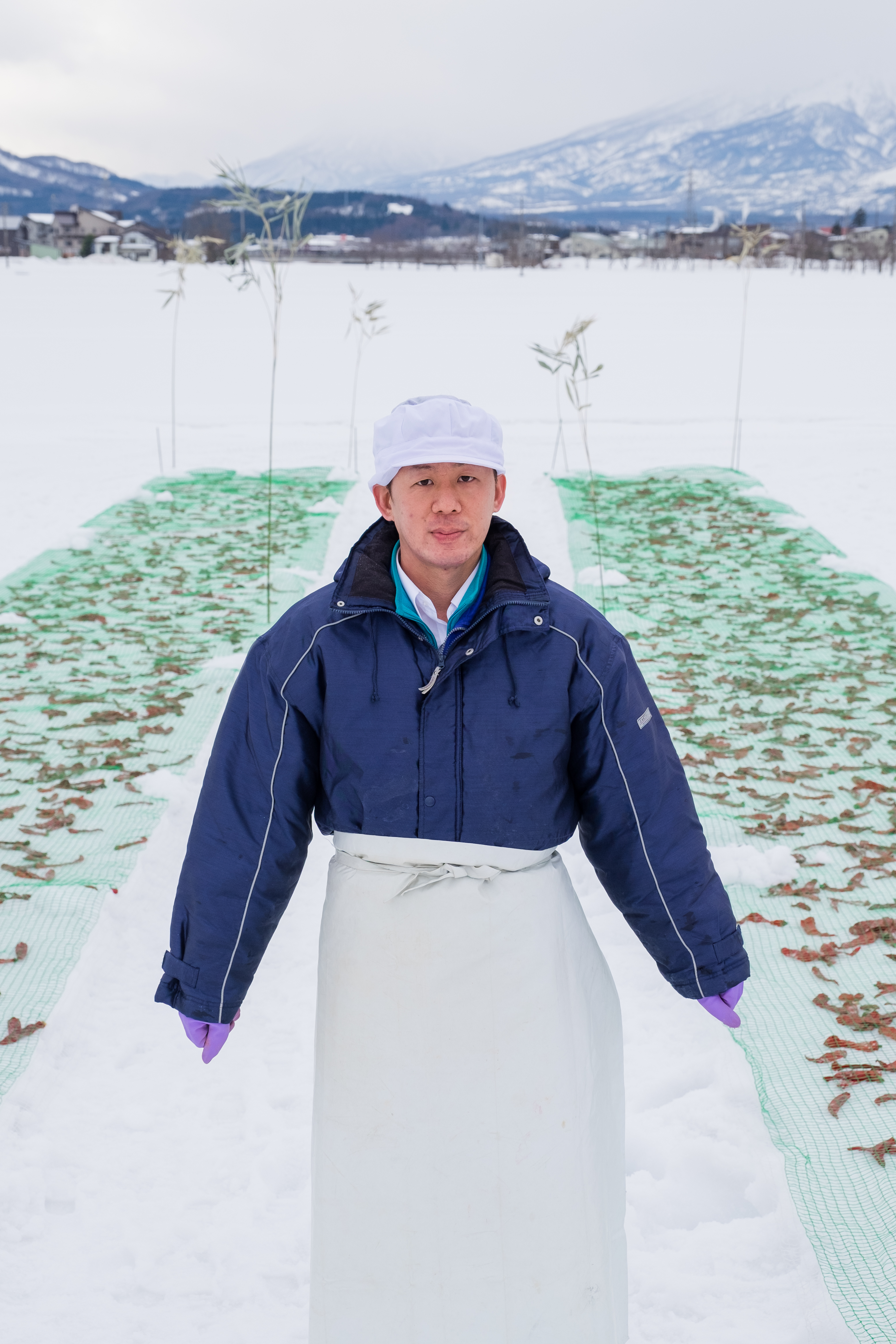
A worker stands in front of covered Togarashi chili peppers. Bamboo is used to mark the location of the rows after heavy snowfall for easier location.
Kanzuri and under-the-snow vegetables are the traditional snow foods of Niigata, served simply or as is alongside local delicacies like rabbit and wild boar stew, but Sho Suzuki, a restaurateur and something of a celebrity chef in Niigata, is reimagining the the local food scene with a hip sensibility. In a few short years, he has opened farm-to-table restaurants, food trucks, and even a deli in Nagaoka that sells food sourced entirely in the prefecture.
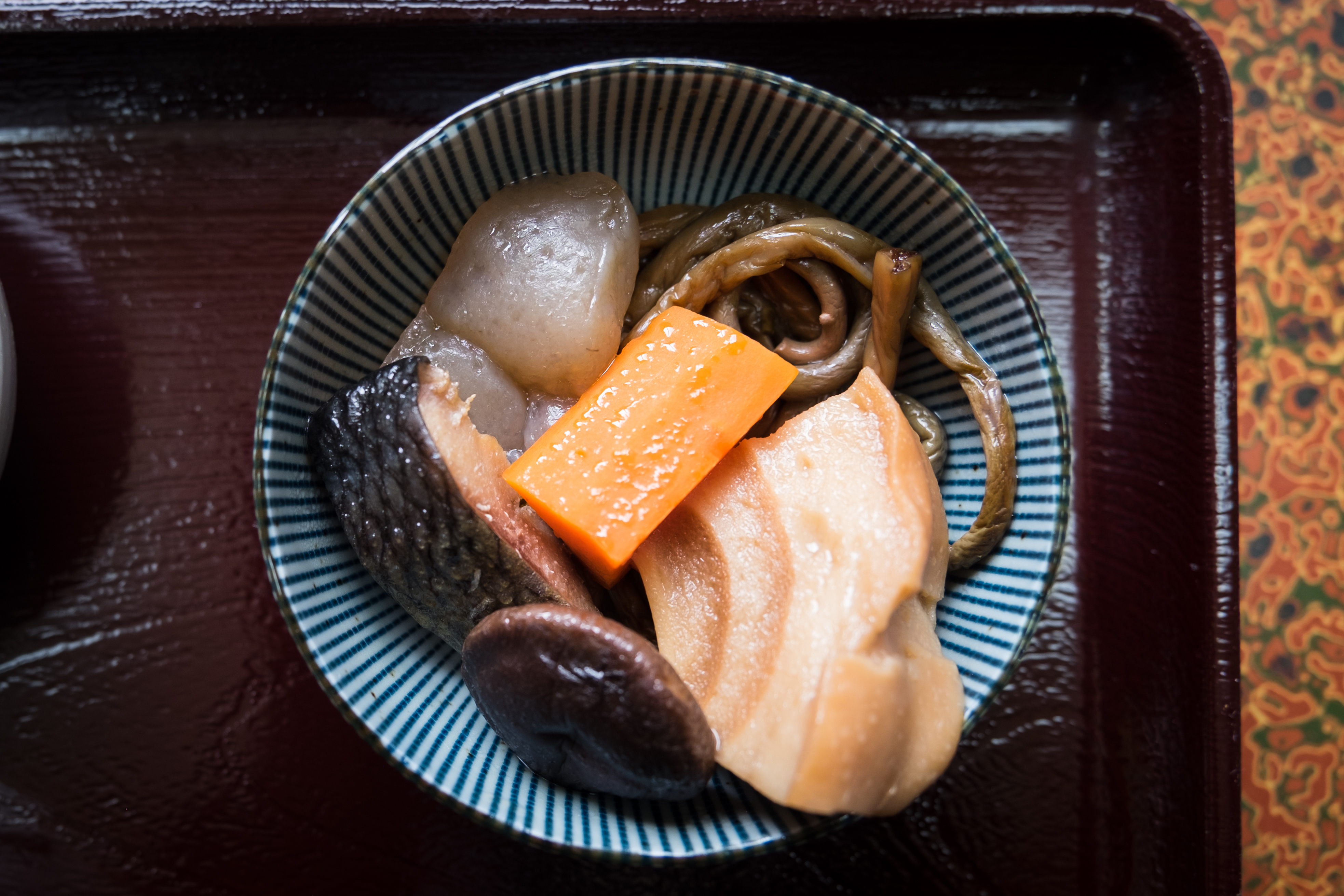
A traditional boiled meal of salmon, konnyaku (yam cake), snow carrots, pork (usually wild boar), and foraged mushrooms.
“Most people come to Niigata for skiing. They know our sake is considered the best. But they aren’t aware that Niigata also has some of the freshest and most unique food in Japan,” said Suzuki.

Sho Suzuki’s appetizer: Snow vegetables served on a bed of snow ice with a miso infused mayonnaise.
From jako (baby sardines) topped pizza with grilled snow vegetables to indigo snow cabbage rolls with koji-infused ginger pork, Suzuki is inventing new uses for snow food and local ingredients. He’s betting that modernizing the traditions of Niigata can draw people from major cities in Japan and from abroad. The recent completion of the Joetsu bullet train means traveling from Tokyo now takes just over two hours, making Niigata and it’s unique snow-food culture more accessible than ever.
